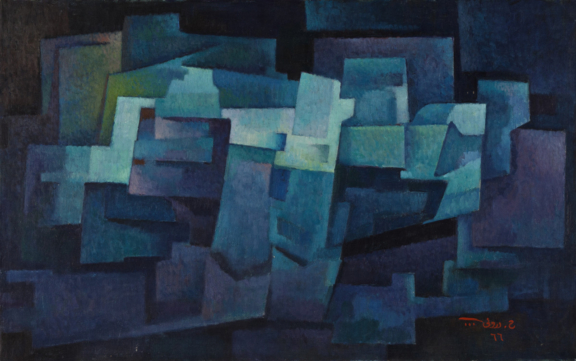
Hafidh Al-Droubi
Harmony in Blue
1914 – 1991
He founded the first free studio for artists in Baghdad in the 1940s, and he would remain a dedicated arts educator throughout his lifetime, eventually becoming a professor at the Institute of Fine Arts and Dean of the Academy of Fine Arts in Baghdad in the 1970s. After the end of the Second World War, he studied in London at Goldsmiths from 1946 to 1950. However, Rome remained more important to his artistic development. He kept in close contact with his teacher Siviero and returned to Italy frequently throughout his lifetime. In 1953, he founded the Impressionist Group in Baghdad, which despite its name, included artists working in a wide variety of styles. Droubi was a founding member of the Iraqi Artists Society and its director in the late 1960s. Through his position as director, he worked with the Calouste Gulbenkian Foundation to build a center for the Society, which opened in 1966. Droubi also played an important role in organising exhibitions of modern Iraqi art in Baghdad and abroad. He was the president of the exhibition committee for the first Arab Biennial held in Baghdad in 1974 and exhibited his work in travelling exhibitions in Beirut, London, Paris, Berlin, and Vienna, among many other locations worldwide. As his two paintings in the Calouste Gulbenkian Museum illustrate, Droubi worked in a variety of styles from Abstraction, to Academic Realism, to his own version of Cubism. He also painted several large-scale murals across Iraq, including Assyrian Civilisation(1975), still on view today in the Baghdad International Airport, and Hatra(1956), which was looted from the Mosul Museum in 2017. It is the variety that he maintained throughout his career that defines his oeuvre more than any individual style. He passed away in Baghdad in 1991 during the First Gulf War.
Sarah Johnson